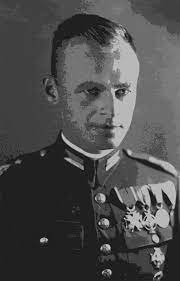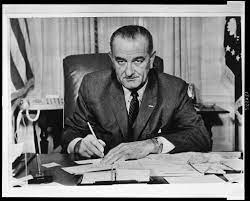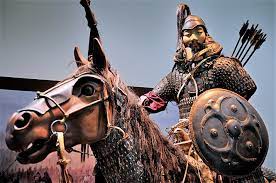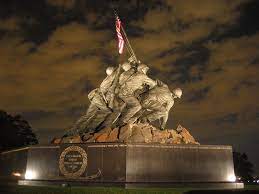Heroism is a significant thing. It inspires people to act bravely, change the course of war, and exist for centuries in the annals of history. However, there are some acts of heroism that are so brave and valiant that they are hard to even believe. A list of 8 such actions is given below:
- 300 Spartans (and a few hundred allies) held off 100,000 Persians (480 BC)
During the second Persian invasion of Greece, it was thought that the Persian emperor Xerxes I had brought together an army of more than a million soldiers. Xerxes and his army came to the coastal pass of Thermopylae, which was also known as ‘the Hot Gates’. There he was met by a Greek army of around 7,000 soldiers and their allies.
Xerxes used a tip received from a Greek traitor to outflank the Greek army. However, the pass was defended by 300 Spartan soldiers as a vanguard. They held off the massive Persian army from launching a full-scale attack on the Greek army, fighting to the last man. Though the heroism of the Spartans was and still is valorized, some numbers were skewed. For instance, most historians today believe that Xerxes’ army was somewhere between 150,000 and 130,000 rather than a million. Also, the Spartans were joined in their last stand by around 1,200 men which included 700 Thespians, 400 Thebans, and a few hundred slaves.
- Witold Pilecki infiltrated Auschwitz to expose it (1940)
In September 1940, Polish resistance fighter Witold Pilecki volunteered to enter Auschwitz, the infamous Nazi concentration camp where millions of people were killed during World War II and the Holocaust. He placed himself in the path of a search operation by Gestapo, the dreaded Nazi secret police to be transported to Auschwitz. He aimed to gather intelligence and pass it on to the Polish Government-in-exile and the Allied powers. While in the camp, Pilecki formed a secret resistance group starting with a few men but ending up with almost a thousand who sent many reports detailing the murder, starvation, and disposal of the bodies of Jews and other prisoners in the camp. These reports were sent out by planning the escapes of some of the men of the resistance group which was always very risky.

Pilecki’s intelligence was among the most vital received by the Allies during the war. Subsequently, in 1943, Pilecki himself escaped and joined the Polish resistance in the Polish capital of Warsaw. After the war, Poland was occupied by the Soviets and a communist government was installed therein. Pilecki was arrested and put on trial as a traitor. After a few weeks, he was executed reportedly saying before his death that he was trying to live his life so that he would feel joy rather than fear during the hour of his death. Pilecki’s story wasn’t known till the 1990s after the collapse of communism. It surprised even his children who were elderly by then.
- John Robert Fox called an artillery barrage on himself (1944)
During World War II, in December 1944, First Lieutenant John Robert Fox was stationed in the Italian village of Sommocolonia along with the 92nd Infantry Division, which was also known as the Buffalo Soldiers. Fox and a small detachment of men volunteered to stay behind in Sommocolonia, which was facing an advance by German soldiers even though it was still in Allied hands.
Fox’s task was to call for defensive artillery strikes from the second floor of a house. He was forced to call for strikes near to his own position as large numbers of German troops started arriving in the area. Subsequently, he called for an artillery barrage on his own position as he and his men were surrounded by the Germans. Although the radio operator he spoke to was hesitant since such an action would most certainly kill Fox and his men along with the Germans, Fox urged him to do it as there were more Germans than Allied personnel at the spot. The artillery strike killed not only Fox and his men but also nearly 100 German soldiers. But it gave a chance to Allied forces to reclaim the area. In 1997, Fox was awarded the Medal of Honor posthumously, along with six other Black Americans who had fought in World War II.
- Thomas Baker won a posthumous Medal of Honor for his sacrifice at Saipan (1944)
In June 1944, the US Army and other Allied forces began a campaign to liberate the Pacific Island of Saipan. The campaign was one of the most critical operations of the entire war for the Allies. After a bombardment by Allied warships, around 8,000 US Marines landed on the island. Sgt. Thomas Baker was among them serving in the 27th Infantry Division. He was armed with a bazooka and along with his company pushed the Japanese to a point of no retreat. The Japanese instead began a ‘Banzai’ charge. Baker held his ground till he ran out of ammunition and was wounded.
When a fellow soldier started dragging him away from the frontline, he requested to be left behind as he didn’t want to be a burden on his unit. Baker was propped up against a tree and left with an eight-round pistol. When the battle ended, the corpse of Baker was found in the same position as he had been left in with all eight rounds fired from his pistol and eight dead Japanese soldiers near him. For his heroism, he was posthumously awarded a Medal of Honor.
- Jacklyn H. Lucas was awarded The Medal of Honor at the age of 17 (1945)
In 1942, Jacklyn Harrell Lucas left school when he was 14 years of age and joined World War II by joining the US Marine Corps Reserve. His true age was subsequently discovered and he was only kept in non-combat duties. However, Lucas’ desire to see combat was so great that he stowed away on a warship bound for the island of Iwo Jima in the Pacific. He was discovered and reprimanded here as well but the 5th Marine Division allowed him to join their ranks.
Lucas and his comrades in a trench were surrounded by Japanese troops and two grenades were thrown into the trench. Lucas leaped onto the first and pulled the second grenade under his body. Only one grenade detonated but Lucas was presumed to have died after saving the lives of his fellow troops. But he survived the blast miraculously and was evacuated for medical treatment. When he recovered, Lucas was honored with the Medal of Honor at the age of 17 becoming the youngest Marine to receive the honor.
- Roy Benavidez suffered 37 injuries while saving the lives of his fellow troops in Vietnam (1968)
Roy Benavidez became an active member of the US Army during the Korean War in the 1950s. But he didn’t serve in active combat duty then. He later became a member of the Army Special Forces at Fort Bragg. In 1965, Benavidez served in South Vietnam during the Vietnam War. However, he stepped on a landmine and was evacuated back to the US. According to doctors, he wouldn’t be able to walk again, however, by sheer effort of his will, he was able to make a complete recovery.
Benavidez was redeployed to Vietnam in 1968, where he joined a Special Forces unit. He responded to a distress call by going to the area in a helicopter armed with only a knife. He leapt off the helicopter and ran to help the trapped soldiers. In the process, he fought off attacks for six hours and was later evacuated with a total of 37 wounds from bullets, shrapnel, and bayonets. He was presumed to be dead but when his body bag was being zipped by his doctor, he spat in the latter’s face to let him know that he was alive. He survived all his wounds almost miraculously and made a complete recovery. Benavidez was awarded four Purple Hearts and a Medal of Honor.
- The three Chernobyl engineers who saved Europe from nuclear eradication (1986)
In late April of 1986, the Chernobyl Nuclear Power Plant located near Pripyat in Ukraine suffered a massive failure which led to the worst nuclear meltdown in modern human history. While the immediate situation was very dangerous, a bigger threat was hovering in the future. Nuclear material in a molten form was eating away the floor of the reactor. If it were to be destroyed and come in contact with a pool of cooling water that was located below, there would be a massive explosion of steam that would destroy the other reactors in the complex. The pool of cooling water thus needed to be emptied.
Three men including mechanical engineer Alexei Ananenko, senior engineer Valeri Bespalov, and the shift supervisor, Boris Baranov, were entrusted with the task of entering the water pool in wetsuits and locating draining valves which would then be opened to release the water. The three managed to do that with only flashlights in their hands, which soon lost their power and their courage. Though all three suffered from high nuclear exposure, they all survived without developing acute radiation syndrome. It is now believed that had they not carried out their task, much of Europe would have been rendered uninhabitable for many hundreds of years.
- The Battle of Vukovar known as the ‘Croatian Alamo’ (1991)
When Yugoslavia broke up in the early 1990s, during the Croatian War of independence (1991-1995), the Croatians fought against the Serb-controlled Yugoslav People’s Army (JNA). In the war, the Battle of Vukovar fought in the small town of Vukovar came to be known as the ‘Croatian Alamo’. Croatian National Guard and civilian volunteers numbering around 1,800 people stood up against 35,000 heavily armed JNA troops in Vukovar. With limited munitions, they held off the JNA for 87 days destroying around 74 tanks of the JNA. The battle caused the JNA troops to become exhausted and was a turning point in the conflict with a ceasefire being called some weeks later.












